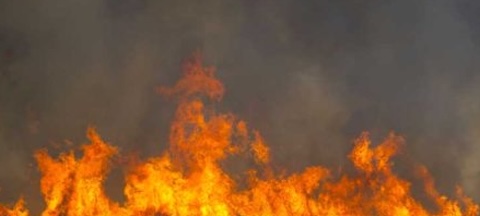No headline.
Published 1:46 pm Monday, September 14, 2015
A special centennial logo was unveiled recently to mark the historical 100th anniversary of Happy Canyon in 2016. Actually, the true facts about the beginning of the night show of the Pendleton Round-Up began when Roy Raley, Lee Drake and George Hartman attended the Umatilla-Morrow County District Fair in 1913, held in a gulch near the bus depot.
It was reported they were disgusted because admission to the fair had been doubled from 25 to 50 cents and the show was not that good. Drake suggested, “Let’s start our own show.”
Trending
They called a meeting and in 1914, Raley wrote the script and named the show after a district near Nolin (a site on the Umatilla River east of Echo) called Happy Canyon. Since the beginning of the Round-Up in 1910, Raley had been thinking of a night show to entertain Round-Up visitors after the rodeo. He envisioned a program based on the history of Pendleton as a frontier town along the Oregon Trail with emigrant trains and covered wagons. One of the first names for the night show was “The Pageant of the West.”
Realizing the local Indian tribes could fill in the early history of the area, with their help the Native Americans became the first part of the pageant, which portrays their lives before the coming of Lewis and Clark and the white man.
With the Indian pageant and the frontier town, the night show became a magic drawing card supported by the community and volunteers. After 1914, it was a yearly event as part of the annual Round-Up. The first two years the pageant was staged on a vacant lot on southeast Frazer and Main Streets, a site occupied by the bus depot in 1914. The first show had a seating of 1,000 persons and Drake said, “The darned audience got in the way so bad we couldn’t tell them from the actors.” The show utilized the District Fair’s board fence and location. A tent was set up on Frazer Street for a dance hall.
The 1915 show had false fronts to form a little frontier town: one false front was a hotel called the “Stagger Inn.” Part of the show featured a cowboy wedding on horseback, a mounted band and quartet. The pageant was just two years old when it was moved to Southwest Third Street and Emigrant Avenue.
In 1916, the Happy Canyon Company was incorporated with a capital stock of $600. With this move and a contract to lease a building known as the Oregon Feed Yard and the grounds for $2,300, Happy Canyon officially became part of the Pendleton Round-Up, although it was still referred to as “the entertainment.” Nevertheless, the show came alive with a slam-bang opening September 22, 1916, featuring the Indian pageant and wild west town. The last show in the old plant was Saturday, September 18, 1955, with the crowed singing “This Old House.”
The dismantling of the 38-year-old Happy Canyon building at the present site of Baxter Auto Parts was completed in 1955 and sold to Safeway stores. The show was moved to its new location adjacent the Pendleton Convention Center in time for the 1956 Round-Up and has a seating capacity of 4,600.
Trending
The centennial logo is somewhat of a puzzle. It was first seen as a stock image in the East Oregonian before the first Round-Up began in 1910, and it appeared on a 1936 Happy Canyon program. Its exact origin is unknown.
Several other Happy Canyon logos have been used. It is reported the new/old logo will be only used for the 2016 centennial year. The regular blue Indian bow and arrow icon will remain the official Happy Canyon logo.
Happy Canyon director Tanner Hawkins, chair of the 100th anniversary committee, said, “The centennial celebration is an historical event to which we are honored to pay tribute.”
The logo will be seen on bumper stickers, calendars, posters, and a limited edition Pendleton Woolen Mills blanket. Along with the Round-Up’s “Let ‘er Buck” slogan, Happy Canyon has its own slogan: “On With the Show.”









